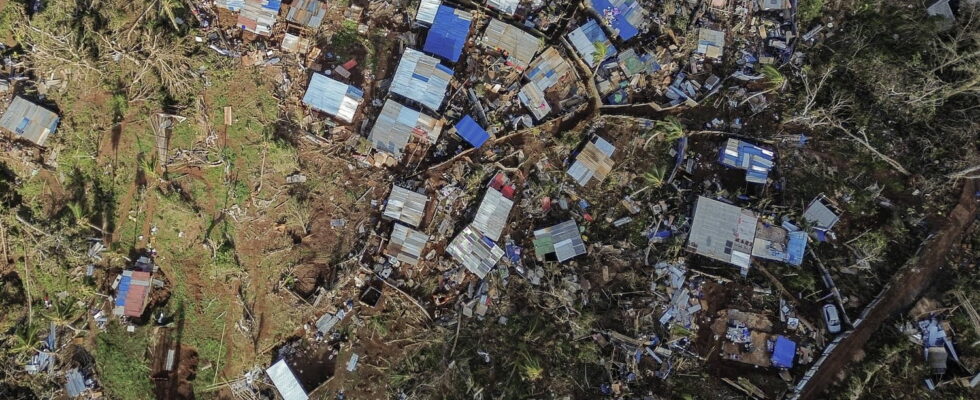Mayotte remains placed on red cyclone alert this Monday, January 13, the day after the passage of tropical storm Dikeledi off the coast of the archipelago. Several floods have affected the south of the island and further rain is expected.
The red cyclone alert is maintained until Monday evening in Mayotte, by decision of the prefect of the island François Xavier Bieuville. The Mahorais must therefore remain confined to their homes or in the accommodation centers they have reached for at least several more hours. Security measures taken due to the fragility of the archipelago still affected by the damage from Cyclone Chido which swept through it in mid-December.
The hardest part, however, seems to be behind, since tropical storm Dikeledi is moving away from the coasts of the archipelago after passing around a hundred kilometers from the Mahoran coast during the day on Sunday. The phenomenon, which changed from a cyclone to a tropical storm as it passed off the coast of the archipelago, still caused heavy rain, marine submersion and flooding. The south and south-east of the island were “particularly exposed” as the Overseas Minister, Manuel Valls, had anticipated.
At midday on Sunday, cumulative rainfall had already exceeded 100 mm in several towns in the south and south-east of the island: 180 mm of water was recorded in Bandrele in the space of 12 hours, “i.e. 2/3 of the rains of a normal January”. The damage was significant in Mbouini, the only village that had been spared during the passage of Cyclone Chido in mid-December “was completely flooded” according to residents’ testimonies to BFMTV. These floods are not without risk, on the contrary they can create new damage in the shanty towns affected by Cyclone Chido and hastily rebuilt with even less solid constructions.
No victims of Dikeledi in Mayotte
Storm Dikeledi caused no casualties in Mayotte. Residents were able to shelter in homes and the 79 emergency centers opened in schools and gymnasiums across the archipelago which welcomed 14,500 people during the passage of the tropical storm. If the most violent bad weather has passed, Météo France forecasts further heavy rains during the day on Monday, despite an attenuation of the winds and precipitation compared to those brought by Dikeledi, due to a “Kashkasi”, a phenomenon of usual monsoon in the Mayotte region this season. Cyclone Dikeledi, on the other hand, lasted three months and left hundreds injured in Madagascar.
The day after the passage of storm Dikeledi, Météo France warns that “certain cloud packs, more convective, can locally generate periods of temporarily sustained showers associated with electrical activity”. According to the agency “the weather would become calmer” in the second part of the afternoon. The wind continues to blow at 35 to 45 km/h but has fallen significantly compared to the 70 and 80 km/h which was feared. As for the sea, it remains rough to the south of the island.
The Mahorais still report difficulties after the passage of a new storm and while those caused by Cyclone Chido were not all resolved. “We have to fend for ourselves,” said the mayor of Dzaoudzi-Labattoir, a town located on an island east of Mamoudzou, in Mayotte La Première. “What we are currently lacking is food. We were not accompanied as in Chido for food, we managed on our own”, adding that he “cries scandal: we cannot manage centers without help, the State must ensure that the means are there.
